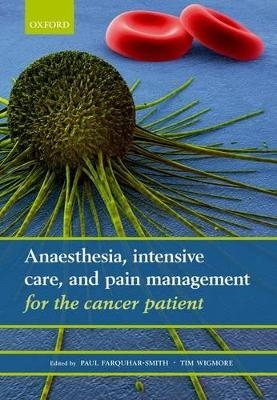
Anaesthesia, intensive care, and pain management for the cancer patient
Oxford University Press (Verlag)
978-0-19-958464-2 (ISBN)
One in three people will develop some kind of cancer in their lifetime. The overall cancer incidence has increased by 25% since 1975 and with anaesthetic involvement in hospital interactions estimated at around 75%, anaesthetists have major input into the care of the cancer patient. This input may start with the preoperative assessment and operation, but often extends to the intensive-care unit and the management of pain resulting from either the disease or from treatment interventions.
This book is comprised of four main sections dealing with: cancer per se, anaesthesia for cancer surgery, intensive care, and pain management. The chapters are authored by acknowledged specialists in their field and are designed to break down what is often a complex area into comprehensible principles for treatment and management for the non-specialist. The anaesthesia section discusses not just major surgery but includes the specific and subtle differences that exist in the diverse types of specialist cancer surgery. The chapters related to pain deal with the current status of several specific cancer pain problems with contemporary evidence, recent developments in management, and novel ways of looking at conventional treatments such as the genetic aspects of opioid use.
Paul Farquhar-Smith trained in anaesthesia, pain, and intensive care in Cambridge and London. He was awarded a PhD in Pain and is a Fellow of the Faculty of Pain Medicine of the Royal College of Anaesthetists. His interests include sedation and delirium in intensive care, pain in cancer survivors such as chronic pain after surgery, and chemotherapy-induced neuropathic pain. Tim Wigmore is clinical lead for intensive care medicine at the Royal Marsden Hospital. Trained in intensive care medicine in Australia, his interests include microbiology and care of the haemato-oncological patient in intensive care.
SECTION 1 ; 1. Haematological malignancy: a rough guide ; 2. Cancer biology and treatment: a molecular and therapeutic overview ; SECTION 2 ANAESTHESIA FOR SPECIFIC SURGERIES AND OTHER INTERVENTIONS ; 3. Preassessment for major cancer surgery ; 4. Perioperative fluid management for major cancer surgery ; 5. Anaesthesia for CT, MRI, PET scan, radiotherapy and other interventions ; 6. Vascular access and anaesthesia for vascular access ; 7. Anaesthesia for head and neck cancer surgery ; 8. Anaesthesia for upper GI cancer surgery ; 9. Anaesthesia for cancer liver surgery ; 10. Anaesthesia for plastic reconstructive and free flap surgery ; 11. Anaesthesia for surgery for gynaecological malignancy ; 12. Anaesthesia for urological cancer surgery ; SECTION 3 MALIGNANT DISEASE AND CRITICAL CARE ; 13. Bone marrow transplantation and implications for critical care ; 14. Outcomes for patients with cancer in critical care ; 15. Implications of chemotherapy for critical care patients ; 16. Interactions between critical illness management and cancer growth and spread ; 17. Ethical consideration for treatment ; SECTION 4 CANCER AND PAIN ; 18. Acute pain management of patients taking opioids ; 19. Bone pain ; 20. Breakthrough pain ; 21. Opioid switching and the genetics of opioid sensitivity ; 22. Paediatric cancer pain ; 23. Complementary therapies in cancer pain ; 24. Pain in cancer survivors
| Erscheint lt. Verlag | 2.8.2011 |
|---|---|
| Zusatzinfo | various line illustrations |
| Verlagsort | Oxford |
| Sprache | englisch |
| Maße | 179 x 245 mm |
| Gewicht | 552 g |
| Themenwelt | Medizin / Pharmazie ► Medizinische Fachgebiete ► Anästhesie |
| Medizin / Pharmazie ► Medizinische Fachgebiete ► Intensivmedizin | |
| Medizin / Pharmazie ► Medizinische Fachgebiete ► Onkologie | |
| Medizin / Pharmazie ► Medizinische Fachgebiete ► Schmerztherapie | |
| ISBN-10 | 0-19-958464-8 / 0199584648 |
| ISBN-13 | 978-0-19-958464-2 / 9780199584642 |
| Zustand | Neuware |
| Haben Sie eine Frage zum Produkt? |
aus dem Bereich


